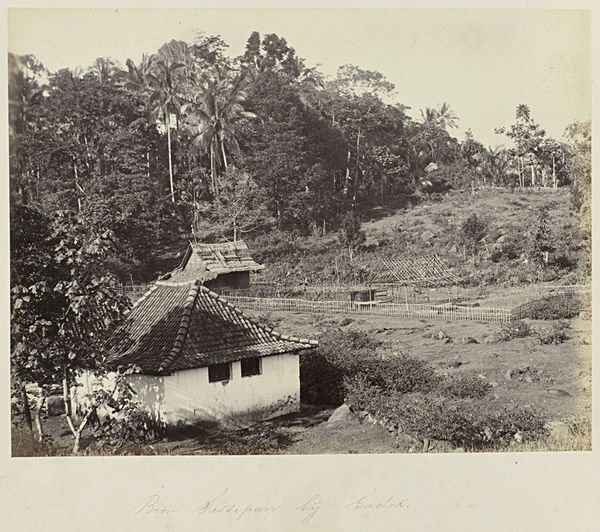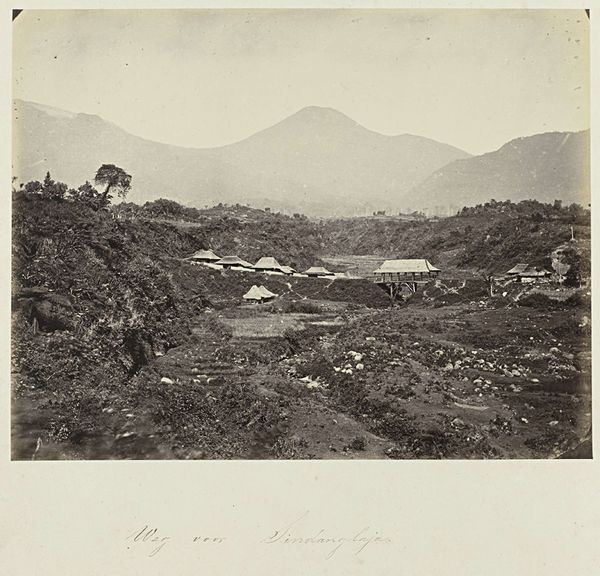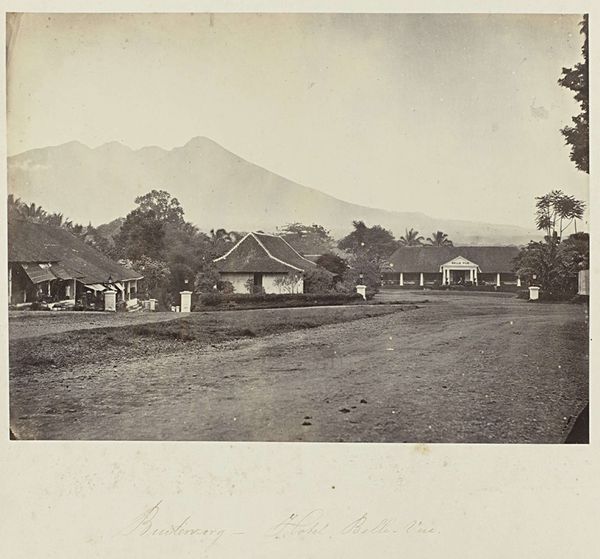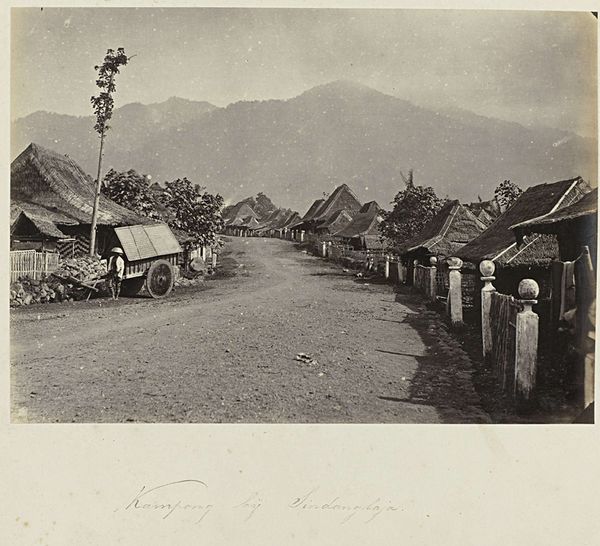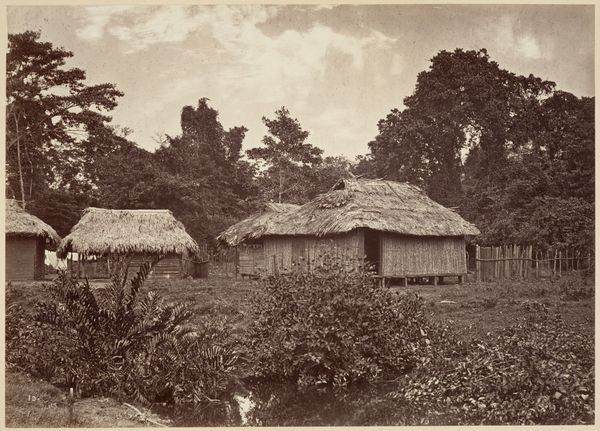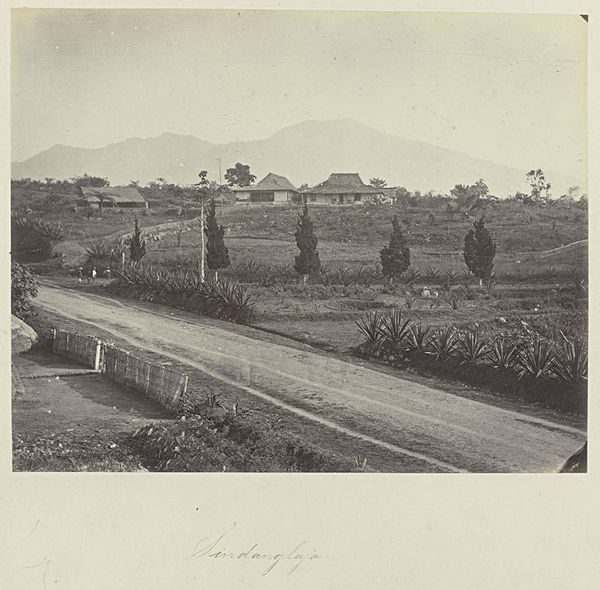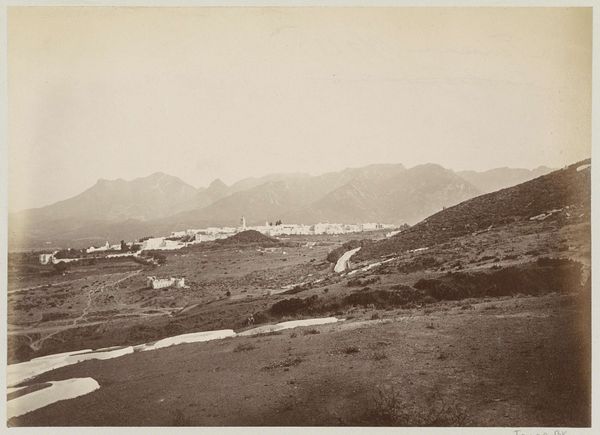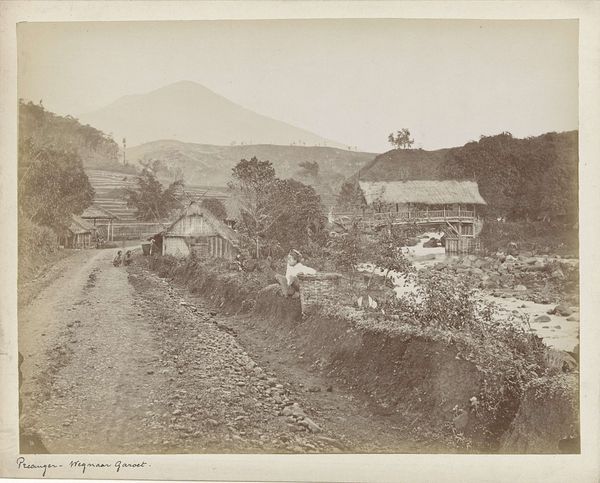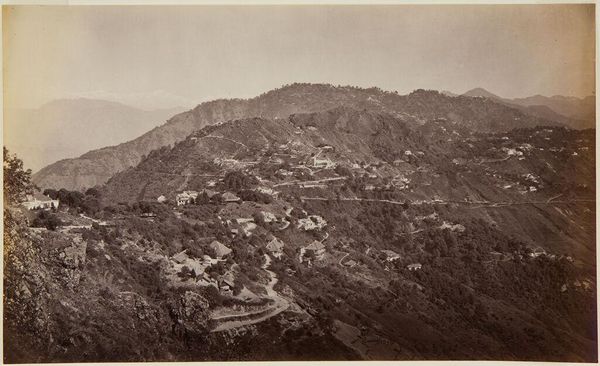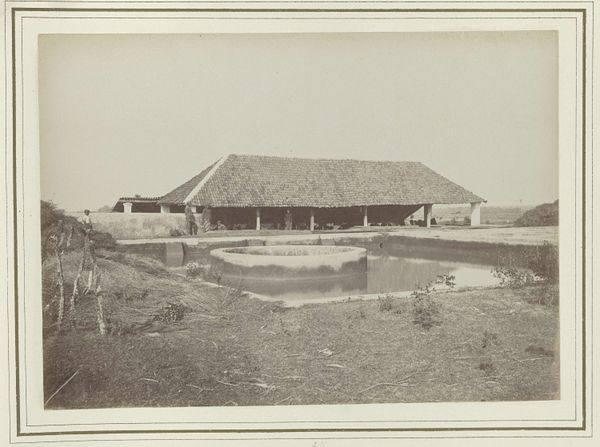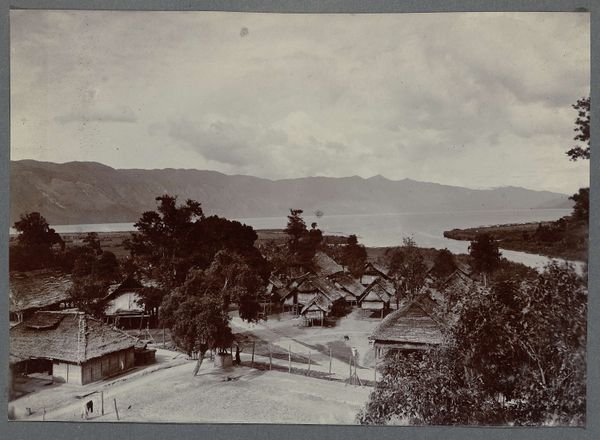
photography, site-specific, albumen-print
#
landscape
#
indigenism
#
photography
#
orientalism
#
site-specific
#
albumen-print
Dimensions: height 202 mm, width 267 mm
Copyright: Rijks Museum: Open Domain
Woodbury and Page created this albumen print titled 'Gadok,' showcasing a settlement nestled in the landscape. The image’s sepia tones are a direct result of the albumen process, using egg whites to bind the photographic chemicals to the paper. This technique, popular in the 19th century, required meticulous preparation and handling of the light-sensitive materials. The texture of the print itself, smooth yet subtly fibrous, enhances the image's depth, inviting the viewer to consider the scene's atmosphere. Woodbury and Page, operating in colonial Indonesia, documented landscapes and local life, and their work reflects the intersection of artistic expression, colonial expansion, and commercial enterprise. Photography at this time involved a labor-intensive process, which is easy to overlook now that we all take pictures on our phones, but in reality, photography was a complex intersection of chemistry, optics, and business. Examining the materials and making of this photograph allows us to appreciate its historical and cultural significance, going beyond aesthetics to understand its place in the history of both art and industry.
Comments
No comments
Be the first to comment and join the conversation on the ultimate creative platform.
